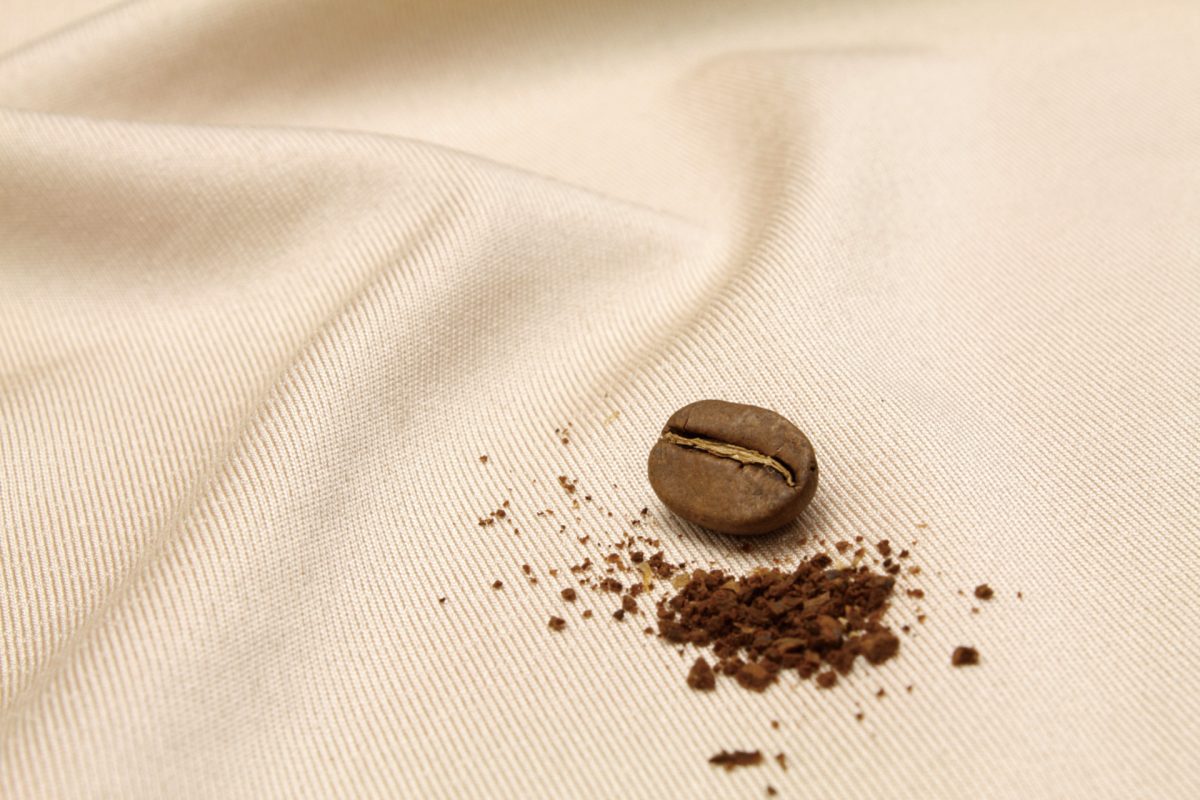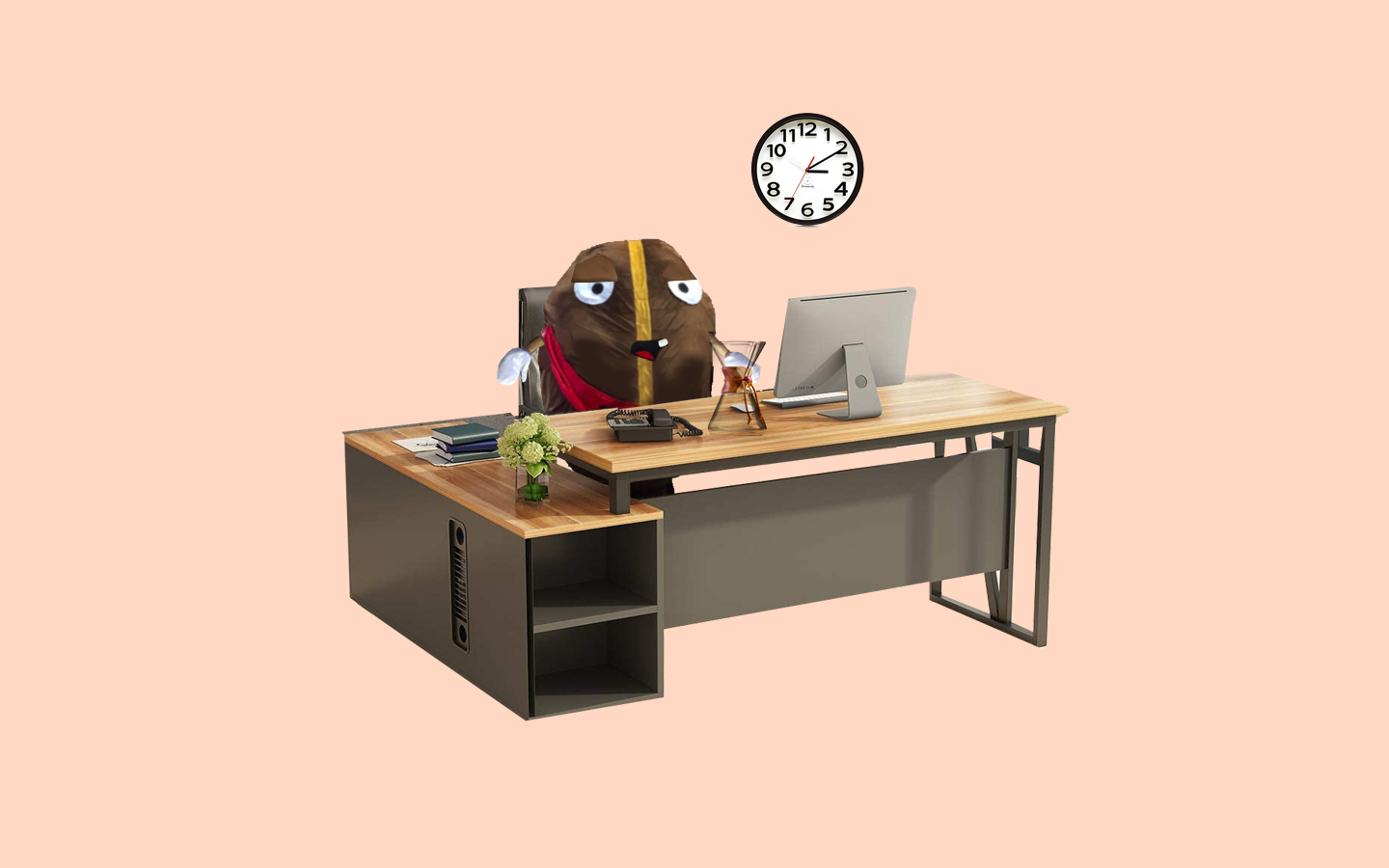
If you have a daily habit of making coffee at home, just think about the quantity of coffee grounds you produce in a week of brewing. Now imagine a small cafe. Now imagine a large, chain cafe. That’s a lot of waste.
Globally, coffee production is estimated to be responsible for upwards of 23 million tons of waste per year. Part of dealing with waste is to begin with entirely rethinking the term “waste.” There are a growing number of businesses and individuals finding unique ways to repurpose coffee grounds (in ink for example) so that it’s not waste, but instead, a potential new resource. One of those ways is in textiles.
Twelve years ago, Singtex CEO Jason Chen and his wife Amy Lai (Senior Vice President of Singtex) went to a cafe. They overheard someone ask for the cafe’s old coffee grounds so that they could take them home and use them as a natural odor absorber (this is a common use for coffee grounds, much like baking soda). “My wife suddenly hit on a wild idea and asked me whether such things could be made into clothing to decrease the smell from men?” says Chen. What started as a joke turned into a business idea, and Chen worked with scientists and researchers to develop a yarn that was partially made from coffee grounds, resulting in the launch of a line of coffee fabric called S.Café.

Coffee grounds are cleaned to extract the oils (which are in turn used in cosmetics), and then ground down to a nano scale. They are then mixed with nylon or polyester—in the case of S.Café, it’s mixed with recycled versions of these compounds—to create a technical yarn with qualities like anti-odor capability.
This is a sought-after characteristic particularly when it comes to performance clothing, and mixing compounds with synthetic fiber to achieve certain technical capabilities is nothing new. Before synthetic fabrics we wore natural fibers, some of which have inherent qualities that are replicated in synthetic fibers. Wool, for example, has antimicrobial properties owed to lanolin, and when turned into textiles does not retain odors. Synthetic fibers are different, and without an additive hold onto odors more easily than natural materials. Textile companies therefore have to recreate those properties with synthetics by adding in additional elements to create performance technical fabrics, often embedding chemicals into the yarns, leading to a fashion and sportswear industry that’s rife with chemical additives.
Using coffee grounds to do this is marketed as a greener alternative, both because it makes use of a resource that would otherwise go to waste, and it provides an alternative to using more conventional chemicals to achieve a similar performance capability. “Due to upcycling and eco-friendly concepts, plus the fact that the features of waste coffee grounds themselves are quite suitable for clothing—as well as material-saving and energy efficiency—we are lucky enough to have upcycled waste coffee grounds for unprecedented green processes of fabric manufacturing,” says Chen. Other technical qualities of the yarn include UV protection.
The S.Café yarn and resulting fabric is comprised of about 5% upcycled coffee grounds (sourced from places in Taiwan like Starbucks and 7-11) and 95% recycled PET. Chen estimates that a piece of clothing made uses the grounds of about three cups of coffee and five PET bottles.
This yarn has been attractive to companies looking to make products differently. The list of S.Café clients is long, including sustainable yoga and activewear company Rumi X, American Eagle (they made coffee jeans), Timberland, and The North Face. Smaller, more niche brands like Sundried, Five12 Apparel, and Ecoalf are also experimenting with the potential of recycled coffee fabric, riding the wave of a rising demand from consumers looking to make more responsible purchases.

“Our sustainable manufacturing methods including recycled plastic bottles, upcycled coffee grounds and water-based ink dyes allow us to make a positive change, changing waste to recycled goods that would otherwise contribute to landfill,” says Michelle Lee of Rumi X. She continues, “it’s our mission to continue investing in research and development to reduce our carbon footprint, pioneer waste-to-wear products and educate our consumers on leading a more sustainable lifestyle.”
But while coffee fabric is branded as an eco-friendly alternative, coffee is only part of the story. Comprised of 5% coffee grounds, the rest of the yarn is comprised of recycled polyethylene terephthalate (PET). Single-use plastic water bottles are made from PET, a material that can be broken down into small flakes, which can in turn be used to make fiber. From an energy and water consumption perspective, recycled PET is a better alternative than using virgin PET, and it also means repurposing a product that has a long lifespan (it is estimated that plastic bottles can take upwards of 500 years to decompose). But whether recycled or not, they both remain petroleum-based products—products that come with negative consequences.

“The downstream effects of washing PET are the same whether it’s virgin or recycled,” says Stiv Wilson of Campaigns Director for Story of Stuff, pointing out that fibers enter watersheds, leaching the chemicals that they are treated with. Wilson continues, “fibers from synthetic clothing corrupt life at its most basic level in the water: plankton. That hurts the entire food chain.”
A serious effect of synthetic clothing that has gained much attention is the issue of microplastics. These tiny plastic particles (defined as 5mm or smaller) flow from our washing machines into the ocean every time we wash an item of synthetic clothing. “Fibers that are from synthetic clothing are the most ubiquitous form of ocean plastic pollution and the most dangerous because they are so small,” says Wilson.
This is a reality that brands founded on sustainability principles have to face, and many of them are working on improving their products. “We understand that synthetic garments, from polyester to nylon and acrylic, shed microfiber plastics during wash that are potentially harmful for the environment, which is why we are constantly seeking out innovative fabrics that can help to reduce this problem,” says Lee. “We are in the process of researching and developing new sustainable fibers from orange fibre and discarded crab shells.” She adds, “as the community continues to grow and leads the change in shopping lifestyle habits—more brands will respond to this need.”

Singtex notes that it not only collaborates with brands who are known for their sustainability efforts—like Patagonia and Vaude—but the company is also investing in research and development to release new, eco-friendly items that will be affordable to their clients. That includes a line of fabric called Stormfleece, whose next rendition will use the coffee technology, and is one layer of knitted fleece, as opposed to the traditional two layers, and doesn’t require any lamination—both things that help to cut down on the overall resulting microplastics. The company also uses S.Café yarn in combination with lyocell (made from wood pulp) for another textile called Sefia, and it has partnered with Taiwanese brand O’Right to use coffee oil (which are extracted when making the yarn) in shampoo.
In the end, the issue of waste doesn’t come with one simple solution; the solution is instead multifaceted. Companies pushing the boundaries with innovative uses for waste challenge all of us to rethink what is a usable resource and what isn’t, but as consumers we should also challenge ourselves to look beyond just the labels, and demand products with minimal impacts.
Anna Brones (@annabrones) is a Sprudge.com staff writer based in the American Pacific Northwest, the founder of Foodie Underground, and the co-author of Fika: The Art Of The Swedish Coffee Break. Read more Anna Brones on Sprudge.
Images courtesy of S. Cafe unless otherwise specified.

























